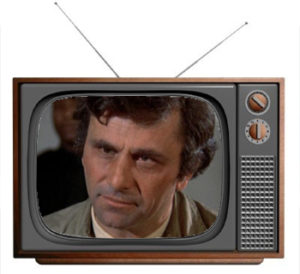The Sales Closing Techniques That Really Work

Of all sales techniques the ones which are most widely misunderstood are sales closing techniques.
- Misunderstood because they conjure up images of sleazy snake oil salesmen manipulating people into buying stuff they don’t want or need.
- Misunderstood because everyone thinks they only come at the end of the sale.
- Misunderstood because people think they don’t work any more.
Yet being able to close a sale makes the difference between success and failure, whatever business you’re in.
And understanding sales closing techniques, why they work, and when to use them, makes the difference between a salesperson and a, well, person.
Why Closing A Sale Is As Easy As ABC
You may have heard of the ABC of Selling – Always Be Closing, and like a lot of these cliches, there’s a lot of good sense in it.
Because for sure you should be constantly testing your customer’s commitment levels during every stage of the sales process. Why?
One very good reason: If you have no commitment from the customer what do you have?

How We Define Commitment In Selling
The proof of commitment from the customer is that they do something for YOU which will move the sales process forward.
Commitment from your customer is the difference between having a good meeting and having a good SALES meeting.
So let’s look at what we mean by commitment, and then how to:
- Test the level
- Ask for it
The Smart Way To Set Commitment Levels
A procedural tip:
Many salespeople make the mistake of just setting one goal for their meetings with customers.
The trouble is that if they don’t reach it they’ve not had a successful outcome. So next time they set the goal a little lower and so on until they reach it.
Smart sales pros set TWO goals:
- The Best Possible Commitment they could expect from that particular customer at that stage in the sales process.
- The Minimum Commitment they will accept from that customer.
So if they get a level of commitment from the customer anywhere between these two they can come out knowing they’ve had a successful sales meeting.
Remember:
Commitment in Sales is agreement from the customer to do something for you which will move the sales process forward.
If you leave a customer with all the actions on you – write a proposal, send a quote, arrange a demo or whatever, you have no commitment and hence NOTHING.
So always ask the customer for something you need from them before you can start writing the proposal, sending the quote etc. AND DON’T DO ANYTHING UNTIL YOU GET IT. (It doesn’t matter whether you actually need it or not, always ask for something.)
Of course if you can’t get the minimum commitment, or if nothing happens after you’ve asked for it, then clearly there are still undiscovered concerns in the customer’s mind.
Or you haven’t fully overcome a Sales Objection. Go back and find out what the issue is, with your Open Questions.
Often if you keep on hitting a brick wall there are personal reasons why the customer is not giving you any commitment, nothing to do with the business logic of your proposal.
By definition you are on tricky ground here, so tread carefully. If possible ask your Guide if they know what the issue is.
The Zen Of Asking For Commitment
If you’ve done everything right so far in the sales meeting, then asking for commitment is just a natural follow-on. Once again it’s back to our trusted friends Open Questions.
Some typical Commitment Questions are:
- What’s the next step?
- Where do we go from here?
- How do we take this further?
- Who else needs to be involved now?
- When do you want to get going on this?
- What happens now?
- How do we progress this?
- What’s the best way forward?
Remember that when you’ve asked one of these you must immediately SHUT UP, and then LISTEN to the customer’s response.
There are two HUGE benefits to this approach:
- The customer feels in control.
- The customer owns the decision.
And it reinforces the feeling that you’re in partnership with your customer, not sparring with them or being too pushy.
Sales Closing Techniques – How Do They Work?
Closing means helping your customer decide to buy . . . NOW.
There are 3 major psychological pressures which we all feel as day-to-day consumers, ie buyers.
They help tip us over the edge into saying “Yes I want it now” – not tomorrow, later, next week, next month, next year, but NOW.
They are:
- The Pressure of Scarcity There’s a limited supply, and when it’s finished, that’s it. No more left.
- The Pressure of Time The clock is ticking for this particular offer, and after midnight time has run out, or the price goes up or some other disadvantageous change.
- The Pressure Of The Peer Group Everyone else has got one so…you don’t want to be left behind, you don’t want to look dumb, you don’t want to be left out.
All three are relevant to B2B selling because buyers in organisations are first and foremost people, with the same feelings and weaknesses they have as consumers.
Let’s look at some classic sales closing techniques – classic because, judged over a period of time, they are of the highest quality.
The Puppy Dog Close

Based on the principle that if you want to sell a puppy to a family you leave it with them over the weekend; when you come back to take it away they’re so attached to the cuddly cute bundle of fun they won’t let you take it back, they insist on keeping it (and paying for it).
This close is the default in the software industry today, and any business where you can leave your kit (or people) for the customer to play with, and find indispensable, should be using this close.
WARNING: The Puppy Must Be House Trained! And whatever you leave with the customer must perform equally flawlessly.
The Columbo Close
Taken from the scruffy TV Detective who always appears to be way off track with his suspects until he’s just leaving, the suspect thinks they’re off the hook…
But as Columbo reaches the door he pauses, looks puzzled, turns round and says something like:
“By the way…”, “Just before I go…”,
then goes on to ask a razor-sharp question exposing his suspect’s guilt because he’s caught them unawares.
As one of our Sales Closing Techniques the psychology works similarly: like Columbo’s suspect the customer is relaxed and off guard after the formal meeting is over.
Maybe even you’re both walking back to reception.
Use it if you’re selling add-ons like maintenance, service agreements, or if you’re asking for referrals. Can sometimes lead to your customer inviting you back in to their office!
Now although the customer is off guard YOU MUST REMAIN ALERT.
For the salesperson the meeting isn’t over until you are at least a mile away – then and only then can you relax.
BEWARE! Many a sale has been lost because the salesman has let their guard down at the “end” of a meeting.
There is no “end” of the meeting while you are still with the customer.
The Alternative Close
Probably the most popular and effective of sales closing techniques, it involves you asking your customer to choose between two options, either of which will be OK by you.
Some typical alternative closes are:
- When would you like delivery, this month or next?
- What colour would you prefer, blue or white?
- Who should we invoice, you or your accounts department?
- How will you be paying, cash or credit?
- Where shall we do the training, on site or in a hotel?
The psychology is simple: the decision your customer has to make is a minor one, but one which pre-supposes the major decision – the order – is a foregone conclusion.
Always always always use the alternative close to set further meetings.
“How about this Thursday at 11, or what about Friday at 10?”
To summarise, closing a sale using these sales closing techniques is not something you do just at the end of the sales process.
Throughout the sales journey the professional salesperson is constantly testing for the level of commitment their customer is displaying.
That’s why at the final stage all you have to ask is, “What’s the next step?”, and your customer replies, “I’ll get the Purchase Order Number”.
That’s how you close a sale.
To Your Closing Success!